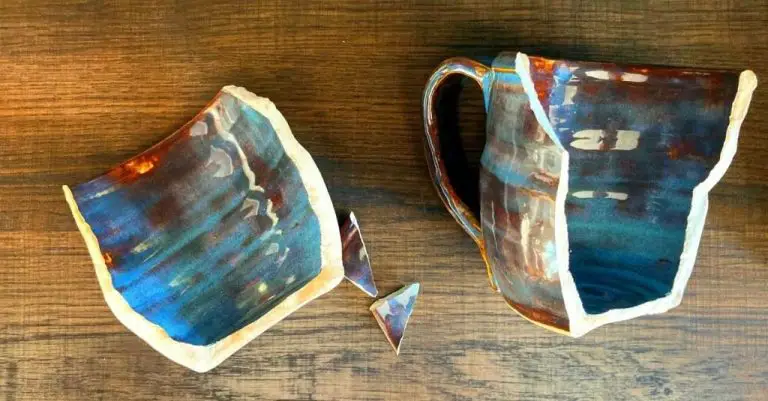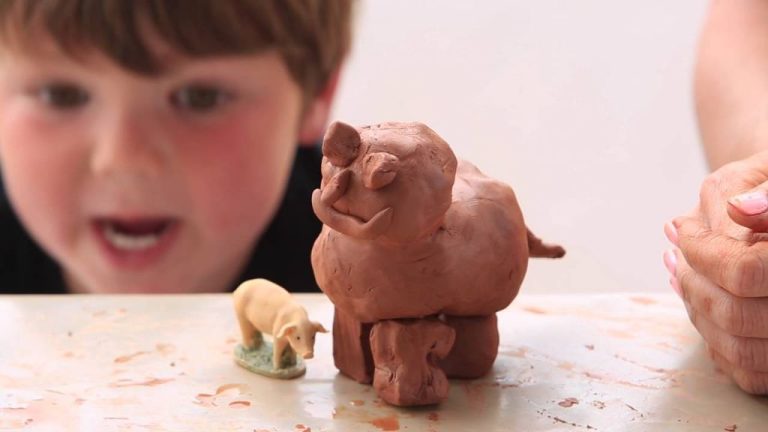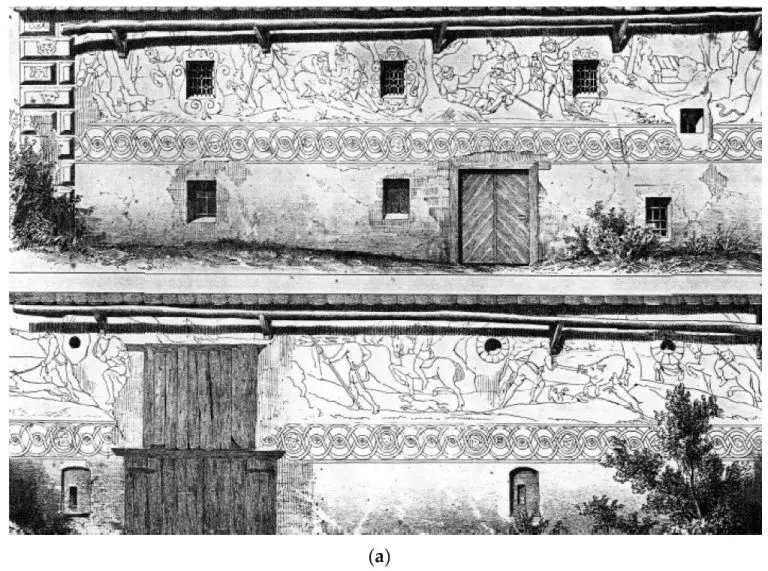How To Make Diwali Lamp Clay?
Diwali, also known as the Festival of Lights, is one of the biggest festivals celebrated by Hindus, Jains, Sikhs and some Buddhists every autumn. An important part of Diwali is the lighting of small oil lamps known as diyas. These lamps symbolize the triumph of light over darkness and good over evil.
Clay diyas are a popular choice during Diwali because they represent the earth element. There are various types of clay diyas including traditional terracotta, painted clay and porcelain. Each style brings its own meaning and beauty to the Diwali decorations.
Making your own clay diyas allows you to add a personal touch to the Diwali festivities. The process is also a great way to get creative and spend quality time with family and friends.
Gather Materials
To make Diwali clay lamps, you will need the following materials:
-
Air dry clay – This is the main material that the lamps will be shaped from. Get a couple pounds of white or terracotta colored clay.
-
Clay shaping tools – You’ll need a rolling pin, clay cutting wire, carving sticks, etc. to help shape the clay.
-
Lamp molds – Purchase or make your own molds to form the basic lamp shapes.
-
Acrylic paint – Gather a variety of bright colors like gold, red, yellow to decorate the lamps.
-
Paint brushes – You’ll need small tipped brushes for detailed painting.
-
Glitter, beads, gems – These decorative items can be attached to the lamps.
-
Varnish or sealant – This will give the finished lamps a nice glossy coat.
Once you have all the necessary supplies, you’re ready to start crafting the Diwali lamps!
Prepare the Clay
The best type of clay to use for making Diwali lamps is an air-dry clay. Air-dry clays are easy to work with and do not require baking. You’ll need around 1-2 pounds of clay per lamp depending on the size you want to make.
Start by kneading the clay with your hands to soften it up and make it more pliable. Add a few drops of water if the clay is too dry. Knead the clay for 5-10 minutes until it reaches an elastic, dough-like consistency. Work the clay by pressing and folding it until it is smooth and free of cracks. Kneading helps release air bubbles and creates a uniform texture.
Once kneaded, wrap the clay in plastic wrap or store it in an airtight container to help keep it soft as you work. Soft, pliable clay is easier to shape and mold without cracking.
Shape the Lamps
When the clay is completely mixed and has reached the desired consistency, it’s time to shape your lamps. There are a few techniques you can use:
Press the clay into plastic or silicone lamp molds to create identically shaped lamps. Make sure to prepare the molds first by spraying them with cooking spray – this will help the clay release more easily.
Roll balls or tubes of clay by hand on a flat work surface. Use a rolling pin to achieve an even thickness if desired. Carefully press the clay into freeform shapes.
Cut shapes out of rolled clay using cookie cutters or household objects like cups or bowls. Press gently and avoid dragging the cutter through the clay which can distort the shapes.
As you shape the lamps, periodically smooth the clay with your fingers or a damp sponge to remove fingerprints and fill in any cracks. Allow the clay to firm up slightly before handling to avoid distortion.
Work on a smooth, nonstick surface and resist overhandling the clay once the basic shape is formed. Let the lamps sit for 10-15 minutes before decorating to allow the clay to firm up enough to retain finer details.
Add Decorations
You can really make your Diwali lamps unique by adding decorative elements. Here are some ideas for decorations to attach to your clay lamps:
- Colorful glass beads – Choose beads in festive colors like red, yellow, orange, green. Press them gently into the soft clay before baking.
- Shiny sequins – Look for sequins in metallic colors to catch the lamp light. Glue them on with strong craft glue.
- Tiny mirrors – Small pieces of mirror can add a beautiful shimmer. Stick them on securely with glue.
- Painted designs – Consider freehand painting traditional Diwali motifs with acrylic paint.
When adding decorations, make sure they are firmly attached so they don’t fall off once baked and finished. Press beads/sequins lightly into soft clay before baking or use a strong glue for pieces added after baking. Allow any glue to fully dry before handling the decorated clay lamps.
Apply Paint
When it comes to painting the Diwali clay lamps, it’s best to use acrylic craft paints. Acrylics provide vibrant color while still allowing the texture of the clay to show through. Some classic color choices are:
- Gold or yellow to represent light and prosperity
- Red, pink, and orange for the colors of the sunrise
- Metallic silver or bronze for a traditional look
Make sure to stir the paint well before applying. Use a small paint brush to neatly paint the details on the lamps. Let the paint fully dry before moving on to the finishing steps. It’s often easiest to paint the lamps while they are laying flat. Take your time and pay close attention while painting to avoid messy drips or smudges.
Bake the Lamps
After shaping and decorating your Diwali lamps it’s time to bake them to set the clay. It’s important to bake the lamps at the proper temperature and for the right amount of time. Underbaking can result in lamps that are too soft or brittle. Overbaking can cause discoloration or warping.
Refer to the packaging instructions for your specific clay brand and type. In general, bake modeling clays at temperatures between 130°F to 275°F. Bake for 15-30 minutes per 1/4 inch of thickness. For example, a 1/2 inch thick lamp would need 30-60 minutes. Allow the lamps to cool completely before handling.
To test if a lamp is done baking, look for a matte finish and firm yet lightweight feel. Underbaked lamps will still look glossy. Overbaked lamps may be discolored, cracked, or have scorch marks. Adjust baking times for future batches if needed.
Baking clay lamps takes patience but will result in stunning, sturdy pieces that will shine bright on Diwali and for years to come. With the right baking time and temperature, your handcrafted lamps will come out picture-perfect.
Apply Finish
Once the clay lamps are baked and completely cooled, you can apply a final finish or protective seal to give them an extra shine and durability. This finishing touch will help make the lamps last longer and prevent any chipping or cracking of the clay over time.
There are several options for finishing the clay lamps:
- Apply a clear acrylic sealer or polyurethane coating with a paintbrush. This will give the lamps a glossy look and waterproof the surface.
- Brush on a tile and grout sealer, which will protect porous clay from stains.
- Spray with a clear acrylic spray for a quick and even coating.
- Rub the surface with a soft cloth and mineral oil, coconut oil or beeswax to enhance the natural clay look.
You can also add some final decorative touches like glitter, faux gems, metallic rub-ons or other embellishments. These will give your Diwali lamps an extra festive and sparkling flair. Use tacky glue or specialized clay adhesives to affix any decorations securely.
Applying a protective finish and adding some glittering accents are great ways to complete your homemade Diwali lamps and make them shine for the holiday.
Display the Lamps
After your Diwali clay lamps are finished, you’ll want to display them prominently during the Diwali festival. Consider placing the lamps in areas where they will shine the brightest.
Windowsills are an excellent place to arrange the clay lamps so their light can be seen both inside and outside. Group several lamps together for a bolder display. You can alternate lamp styles and colors for visual interest.
For safety, only keep the clay lamps lit for short periods of time and never leave them burning unattended. Make sure they are displayed away from flammable materials like curtains. Place them on a heat-resistant surface since the flame may warm the clay.
Diwali lamps make a beautiful display that represents the triumph of light over darkness. Place your homemade clay lamps where they can be admired and enjoyed during this festive time.
Cleanup
After your Diwali clay lamp project is complete, be sure to properly clean up and store any leftover clay. Here are some tips:
– Allow the clay lamps to fully dry and harden before handling. Once dry, gently brush off any loose clay pieces or dust into the trash.
– Wash your hands, work surface and any tools used with soap and warm water to remove lingering clay. Use a damp sponge to wipe down the work area.
– To store leftover clay, tightly wrap it in plastic wrap or place it in a sealed plastic bag, squeezing out any air pockets. This prevents the clay from drying out.
– Leftover clay can be reused for future projects if it has not been contaminated with food or dirt particles. Simply knead it to restore pliability before the next use.
– Any clay that is unusable can be disposed of in the regular trash. Alternatively, check if your local community has a clay recycling program.
Properly cleaning up and storing clay keeps your work space tidy and allows you to reuse clay scraps for your next craft project. With some care, clay can be used again and again.




